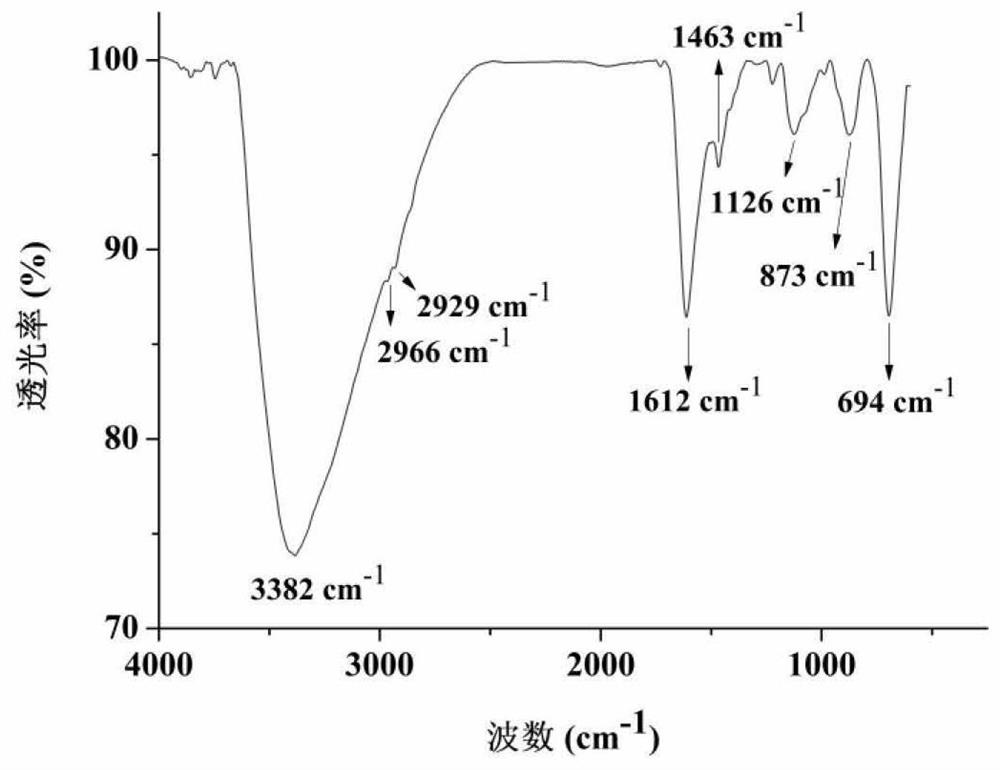ZrO2 nanoparticle modified three-dimensional graphene material and application thereof in organophosphorus pesticide detection
An organophosphorus pesticide and nanoparticle technology, applied in the field of analytical chemistry, can solve the problems of poor sensitivity and accuracy, and achieve the effects of low detection limit, enhanced stability and wide linear range.
- Summary
- Abstract
- Description
- Claims
- Application Information
AI Technical Summary
Problems solved by technology
Method used
Image
Examples
Embodiment 1
[0051] ZrO 2 The preparation method of the three-dimensional graphene material modified by nanoparticles is as follows: figure 1 As shown, the specific steps are as follows:
[0052] (a) Put a 1.2cm diameter metal mesh sheet (200 mesh, 0.05mm thick wire, 74 micron holes) in 10% dilute hydrochloric acid for 12 hours of corrosion, and dry;
[0053] (b) placing the rough metal mesh sheet after corrosion in APTES for 12h to realize the amination of the metal mesh;
[0054] (c) 0.02g polydiallyldimethylammonium chloride is added in 100mL graphene oxide suspension (w / w, 0.1%), then the metallic mesh of step (b) amination is placed in it, Add 0.001g of N,N-hydroxysuccinimide and 0.001g of 1-(3-dimethylpropyl)-3-ethylcarbodiimide as a catalyst, and react at 70°C for 2 hours;
[0055] (d) Repeat (b) and (c) three times successively for the metal mesh obtained in step (c), to obtain a graphene oxide-modified metal mesh;
[0056] (e) the graphene oxide modified metal net that step (d...
Embodiment 2
[0061] ZrO 2 The preparation method of the three-dimensional graphene solid-phase extraction column modified by nanoparticles:
[0062] The empty solid-phase extraction column used in this example has an inner diameter of 1.2 cm and a volume of 3 mL, and the extraction material is ZrO 2 Nanoparticle-modified three-dimensional graphene; firstly, the lower sieve plate (with a pore size of 10 μm) is loaded into the solid-phase extraction empty column, and then the prepared 2-10 pieces of ZrO 2 The three-dimensional graphene material modified by nanoparticles is filled into the empty column of solid phase extraction, and then the upper sieve plate (with a pore size of 10 μm) is loaded into it and compacted to obtain ZrO 2 Nanoparticle-modified three-dimensional graphene solid-phase extraction column.
Embodiment 3
[0064] Using ZrO 2 Nanoparticle-modified three-dimensional graphene solid-phase extraction column for the detection of organophosphorus pesticides:
[0065] Solid Phase Extraction:
[0066] 1. at first with 4mL acetonitrile and 4mL water to the ZrO prepared by embodiment 2 2 Nanoparticle-modified three-dimensional graphene solid-phase extraction column for elution and activation;
[0067] ② Use a peristaltic pump to drive 20mL of the organophosphorus pesticide working solution to pass through the ZrO 2 The flow rate of the nanoparticle-modified three-dimensional graphene solid-phase extraction column is 1mL / min to ensure that the organophosphorus pesticide molecules are adsorbed on the surface of the prepared extraction material;
[0068] ③ Then drive 1mL of acetonitrile through ZrO 2 The three-dimensional graphene solid-phase extraction column modified by nanoparticles, the flow rate is 0.8mL / min, and the eluate is obtained for use.
[0069] High-performance liquid chrom...
PUM
| Property | Measurement | Unit |
|---|---|---|
| diameter | aaaaa | aaaaa |
| linear range | aaaaa | aaaaa |
Abstract
Description
Claims
Application Information
 Login to View More
Login to View More - R&D
- Intellectual Property
- Life Sciences
- Materials
- Tech Scout
- Unparalleled Data Quality
- Higher Quality Content
- 60% Fewer Hallucinations
Browse by: Latest US Patents, China's latest patents, Technical Efficacy Thesaurus, Application Domain, Technology Topic, Popular Technical Reports.
© 2025 PatSnap. All rights reserved.Legal|Privacy policy|Modern Slavery Act Transparency Statement|Sitemap|About US| Contact US: help@patsnap.com



